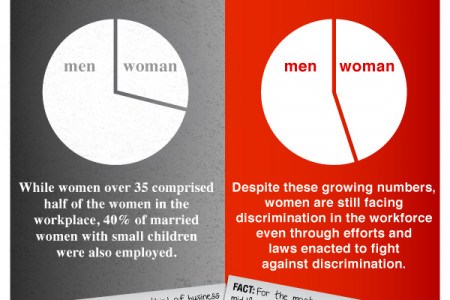
The history of office interior design
THE HISTORY OF OFFICE DESIGN A TIMELINE OF OFFICE INTERIOR DESIGNS FROM 1920 TO 2014! 1920 The silent generation at work. As you can see here, the office structure was pretty basic back then. In fact, doesn't it kind of resemble a class- room set-up? The workplace in 1920 was occu- pied by the silent generation. Even though they didn't have the tech we do today, they believed in "doing more with less" and being task- oriented very much defined these workers. 1940 #NoFilter. No, really. Looking back we can see that the offices of 1940s lacked a lot of things that we deem 'essentiaľ today. It makes you wonder how we ever lived with- out all this technology, but we did! Do you think you could work a week in one of these offices? 1960 Another snapshot of a busy office in 1960. Where are all the computers and gadgets? And is that a rotary dial phone?! How retro. Compared to today's standard office, this one lacks privacy and the environment is very monotonous. No break-out spaces or quiet areas make for a very crowded workspace. 1965 Moving forward a few years and not much has changed. Clipboards on the wall and paper trays everywhere? Dark times indeed! Imagine finding a place to store all those files. Today, technology allows us to keep everything on the cloud and in harddrives. 1970 We are now in the 1970s. The office has started to become more familiar to that which we know today. The lighting and layout appear far more modernised; however, the technology used was medieval compared to what we are used to in the 21st century. 1975 Further through 1970s we see the rise of the dreaded cubicles. The felt-covered grey walls didn't do much to encourage collabo- ration between co-workers. Today, open plan office design gives us the freedom to socialise with our colleagues and bounce ideas off one another more proficiently. 1970 Tech Time! Take a look at this ancient relic! This was THE I.T. system back in the seventies. Computers back then were mostly built for word processesing - putting it bluntly, they were monitored typewriters at most. Today, we have computers that are built with multifunctional capabili- ties and can handle anything from video editing to play- ing system demanding games, or both! 1980 The beginning of the computer age. Here we see much more prolific use of technology. Typewriters are out and computers are begin- ning their reign. The office interior design, however, is stillI lacking. Cramped spaces, shared desks and minimal personal space is the norm. 1985 More computers and more space! Things really start to move forward here. Individual team areas were still minimal and most infor- mal meetings took place in the board room. However, we can certainly see modernisation within the office. 1990 The dawn of the digital age. Computers are common everywhere in the workplace and their capabilities have advanced quickly. We are now using machines that can do a lot more than merely input words digitally. 1995 Not a huge amount has changed since 1990, however, 1995 saw the introduction of Java. This huge leap in programming brought new and simpler methods to coding. Combined with the first VOIP service where PC to phone solu- tions flooded the market, we had a pretty big advancement in technology. 1997 Tech Time! Google! Here's an early picture of Google in 1997. Both search Seetngoge ntan on ch e engines and technology have come a long way since then. Computers got really smart, as did the office envi- ronment and our way of working. Technology began to move really quickly in the 1990s. Soon, flatscreens and the first truly compact mobile devices were introduced. Along with advances in technology, so too did our work habits change. About Google! GeGoog y The 21st Centwry In the 21st century we began to see radical changes to the workplace. Alongside advancements in technol- ogy, the workplace became more open, mobile and creative. Businesses sought new ways to stimulate pro- ductivity and innovation. They turned to office interior design and new flexible processes such as agile working for the answer. These new designs opened up new ways of working. We started to see Activity Based Working being implemented into the workplace. This meant that workers are able to choose where and when they work, in the office that provides a range of work settings that are designed for different types of tasks. 2007 SMOKE BAN Smoking in all enclosed workplaces in England was banned on 1st July 2007. MULTI-GENERATION Five generations are now in the workplace, a result of the ageing population and unheard of until now: the silent generation, baby boomers, X Y and Z. MODERN OFFICE DESIGNS THE BENEFITS MOBILE TECHNOLOGY New ways of working MORE SPACE SUSTAINABILITY CLOUD Adaptability to change & growth Reduced carbon footprint TECHNOLOGY 24 REDUCED MORE COST PRODUCTIVE Increased profit & ROI Better staff & business perfromance WELLBEING Job satisfaction & staff retention PRESENTED TO YOU BY office principles total business interiors
The history of office interior design
Publisher
Writer
Source
http://offic...fographic/Category
AnimalsGet a Quote










